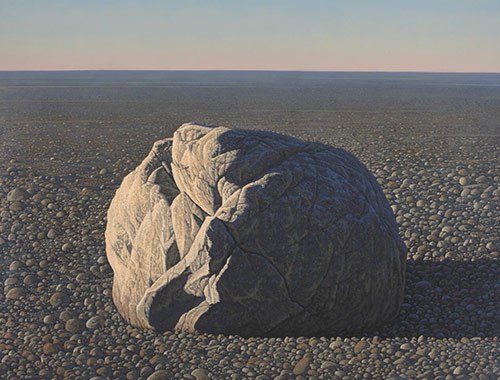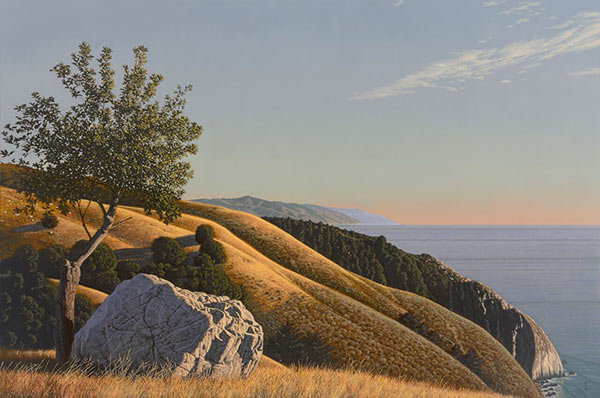In dialogue with universal, humanistic ideas and themes, the Classical canon comes alive in the magnetic works of David Ligare at the Laguna Art Museum in California.
An idealist rather than a realist, artist David Ligare has built an esteemed career surrounding exquisite paintings that revive the classical principles of beauty, harmony, and order — the symmetria or commensurability of part to part and part to whole. The resulting “literate pictures,” as Ligare calls them, are much more than representations of the artist’s unrivaled skill, but seek to direct and define Western culture while illuminating ancient ideas that, as noted by the museum, “inform our modern world and shared humanity.”

David Ligare, “Prospectiva,” 2000, oil on canvas, 80 x 96 in. (c) Laguna Art Museum 2015,
Collection of Marsha and Darrel Anderson
Ligare says, “Making paintings is a passion for me, but it is a passion of ideas rather than just pigment. I believe deeply that art can make a difference in the way we view the world, and in the way we act in it.” Indeed, Big Sur has never been imaged so idealistically and beautifully as in his “Grimes Point, Big Sur.” Standing on the sloping hills along the Pacific coast, the viewer is whisked away to a world where every detail is within its perfect place and space. A captivating golden light blankets the rolling slopes as they descend to the shore. No leaf, grass, tree, stone, or shrub has been forgotten, each treated with the utmost care and attention. The painting also has a stillness that connotes stability, permanence, timelessness, and idealism.

David Ligare, “Penelope,” 1980, oil on canvas, 40 x 48 in. (c) Crocker Art Museum 2015
The allusions to Classicism are more obviously asserted within “Perspectiva,” a perfectly rendered view of the famed Florentine Baptistery. The beautiful Romanesque structure is presented at center and symmetrical, while details of the white and green marble are captured with photographic accuracy.

David Ligare, “Rock,” 2012, oil on canvas, 60 x 80 in. (c) Laguna Art Museum 2015, Collection of Loma and Dennis Calas
In fact, the painting’s subject and title recall the famous experiment conducted by the renowned Renaissance architect, sculptor, and engineer Filippo Brunelleschi (1377–1446), who is credited with having developed linear perspective. Legend suggests Brunelleschi painted a geometrically incorrect view of the Florentine Baptistery. While holding a mirror, Brunelleschi peered through the back of his painting through a hole. The reflection of his painting could then be juxtaposed directly next to the actual subject, which allowed the artist to observe and correct his perspective mistakes. The discovery, which revolutionized the ways in with painters represented three-dimensional space on two-dimensional surfaces, is frequently cited as a representative example of the period’s cultural, scientific, and artistic innovation. Just beyond the doors, the viewer can find two figures as they shake hands. They are undoubtedly in Renaissance costume — could one assume that Brunelleschi himself is represented? The prospect is tantalizing.

David Ligare, “Landscape for Baucis and Philemon,” 1984, oil on canvas, 32 x 48 in.
(c) Wadsworth Atheneum Museum of Art 2015
“David Ligare: California Classicist” opened on October 18 at the Laguna Art Museum and will be on view through January 17.
To learn more, visit the Laguna Art Museum.
This article was featured in Fine Art Today, a weekly e-newsletter from Fine Art Connoisseur magazine. To start receiving Fine Art Today for free, click here.







